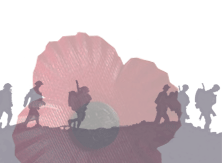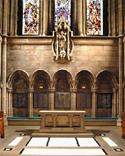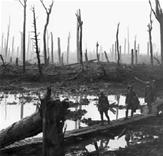Glasgow University and the First World War
The beginning of the First World War caught many unaware and Glasgow University was unprepared for the loss of staff and students that was to follow.
 Indeed Principal Donald MacAlister had been holidaying with his family in Germany when the conflict started and was interned for a short time. Once home, however, he played an active part in rallying the troops, encouraging staff and students alike to sign up for the cause.
Indeed Principal Donald MacAlister had been holidaying with his family in Germany when the conflict started and was interned for a short time. Once home, however, he played an active part in rallying the troops, encouraging staff and students alike to sign up for the cause.
The reaction at Gilmorehill was positive with many members of the University community signing up immediately. The 400 recruits of the Officer's Training Corps, which had been set up in 1910 in response to hostile relations with Germany, were among the first to be mobilised.
The University also made accommodations to assist staff and students who wanted to sign up: the University Court agreed to offer full pay minus army payments to staff, and examinations and graduation ceremonies were brought forward to allow students early completion.
An indication of how these steps affected university numbers could be seen with the publication of the first Roll of Honour, printed a mere 6 months on from the start of the conflict; already 1255 university men and women were engaged in war service, 77% of whom were commissioned officers.
Today the University of Glasgow is remembering those students who were involved in the First World War.
WWI Roll of Honour
The Roll of Honour is testament to the service of the University of Glasgow men and women during the Great War. The online Roll allows a brief glimpse at the lives of the people whose names are on the Memorial Panels in the Memorial Chapel. They include soldiers, doctors and nurses who went to war, some never to return, during the four years of the First World War.
University of Glasgow Memorial Chapel
 After the horrors of the First World War the University looked for a lasting memorial to its dead. Principal and Vice-Chancellor Donald MacAlister explains in the preface to the Roll of Honour how the University decided to build the Memorial Chapel for the fallen.
After the horrors of the First World War the University looked for a lasting memorial to its dead. Principal and Vice-Chancellor Donald MacAlister explains in the preface to the Roll of Honour how the University decided to build the Memorial Chapel for the fallen.
"After due deliberation it was agreed, with the consent of all, that their memory, and our gratitude for their devotion, should be associated with the place of our corporate worship, to the end that their example might be enduringly impressed upon Glasgow students in time to come."
The Chapel is located in the centre of the west wing of the main University building. The design was the work of Sir John Burnet and recalls the early Gothic period to blend in with Sir George Gilbert Scott's main building. The figures of Scottish saints around the pulpit are the work of Walter Gilbert and the remaining wooden carvings were designed by Archibald Dawson. The windows were designed and made by Douglas Strachan. Various donations and gifts were made to the Chapel, helping to make it a place of beauty for worship and a worthy memorial the University's dead.
Remembering Passchendaele
 The Battle of Passchendaele, also known as the Third Battle of Ypres, was one of the major battles of World War One, involving British (including the 9th, 15th and 51st Scottish Divisions), South African, Canadian and ANZAC units.
The Battle of Passchendaele, also known as the Third Battle of Ypres, was one of the major battles of World War One, involving British (including the 9th, 15th and 51st Scottish Divisions), South African, Canadian and ANZAC units.
The battle started as a campaign to force a breakthrough in the front and to capture the ports on the Belgian coast. It eventually got stuck in the village of Passchendaele, now part of the Flemish community of Zonnebeke, Belgium, and lasted from July to November 1917.
The name Passchendaele has become linked for ever to the utter horror of industrialised warfare, of living and dying in trenches of liquid mud, and for months of fierce fighting for little or no advantage. The battle itself took place on marshland flooded with heavy August rains.
The war dead totalled 615,000 lives, 325,000 on the Allied side and 260,000 on the German side. The University of Glasgow's website remembers the 19 members of its community known to have died at Passchendaele.
Many did not die from their wounds but drowned in the mud as Siegfried Sassoon, the war poet, wrote:
I died in hell - (They called it Passchendaele).
My wound was slight,
And I was hobbling back; and then a shell
Burst slick upon the duckboards: so I fell
Into the bottomless mud, and lost the light
Memorial Tablet (1918)
Visit the University of Glasgow's First World War Commemoration site and Roll of Honour.
All details are reproduced with the permission of the University of Glasgow.











